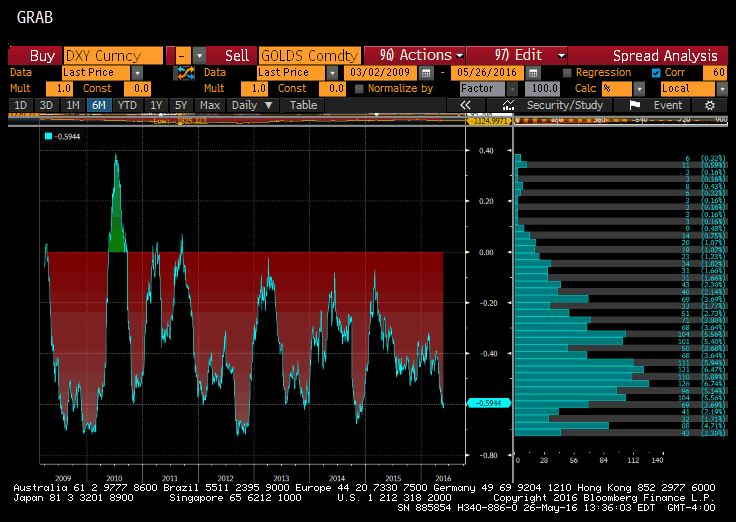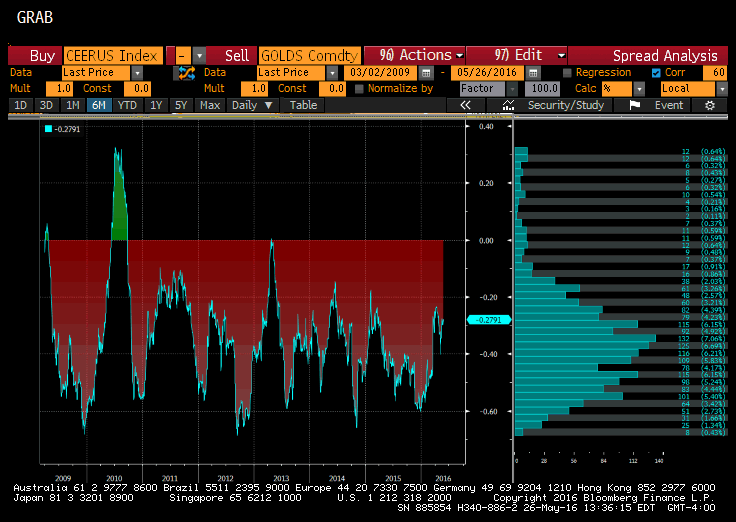Many investors still think about gold as if it were money. Economists identify three functions of money: store of value, means of exchange, and a unit of account. It can be a store of value, but the price fluctuates compared with other forms of money, or other commodities, like oil or silver. Some argue that it is a store of value because of the limited supply, but that argument applies to many other goods, including commodities and real estate (which Mark Twain said you have to invest in because they have stopped making it). Others argue it is a store of value because our ancestors thought so. For those who bought gold over the past 4.5 years, it has not been a store of value. It has lost more than a third of its value in US dollar terms, and of course, nearly the same in Chinese yuan. It has lost more than a fifth of its value in the past 3.5 years in euro terms. In the past three years, it has lost nearly 16% in yen terms. Gold can be a means of exchange but rarely is used like that. If I tried to pay my rent with a gold nugget or a bar, my landlord would likely tell me to give her real money. Even in the absence of acceptable paper money, like in occupied Germany after WWII, soldiers and other people did not resort to gold, but accounts suggest that cigarettes were used. Gold is not a unit of account.
Topics:
Marc Chandler considers the following as important: CEERUS, Featured, Gold, Gold and its price, Great Graphic, JPY, newsletter, US Dollar Index, USD
This could be interesting, too:
Nachrichten Ticker - www.finanzen.ch writes Die Performance der Kryptowährungen in KW 9: Das hat sich bei Bitcoin, Ether & Co. getan
Nachrichten Ticker - www.finanzen.ch writes Wer verbirgt sich hinter der Ethereum-Technologie?
Martin Hartmann writes Eine Analyse nach den Lehren von Milton Friedman
Marc Chandler writes March 2025 Monthly
 Many investors still think about gold as if it were money. Economists identify three functions of money: store of value, means of exchange, and a unit of account.
Many investors still think about gold as if it were money. Economists identify three functions of money: store of value, means of exchange, and a unit of account.
DXY and Gold, Spread AnalysisThe one thing that most observers think they know is that gold and the dollar move in opposite directions. But what does that really mean? How do we know what the dollar is doing? We have to measure it against another currency or basket of currencies.
|
Many observers use the Dollar Index. The daily correlation since March 2009 is shown in this first Great Graphic created on Bloomberg.
CEERUS and Golds, Spread AnalysisHowever, the Dollar Index is not the US dollar. It is the dollar against a basket of currencies that are heavily weighted toward the euro. In fact, over the past 60-days, the (absolute value) of the correlation between the Dollar Index and gold (on a percent change basis ) and the correlation between the euro and gold is nearly identical (0.59 and 0.58). |
Instead of using the Dollar Index, using a broad trade-weighted measure of the dollar may be a more rigorous approach. While both measures are inversely correlated to gold, there are significant discrepancies.


